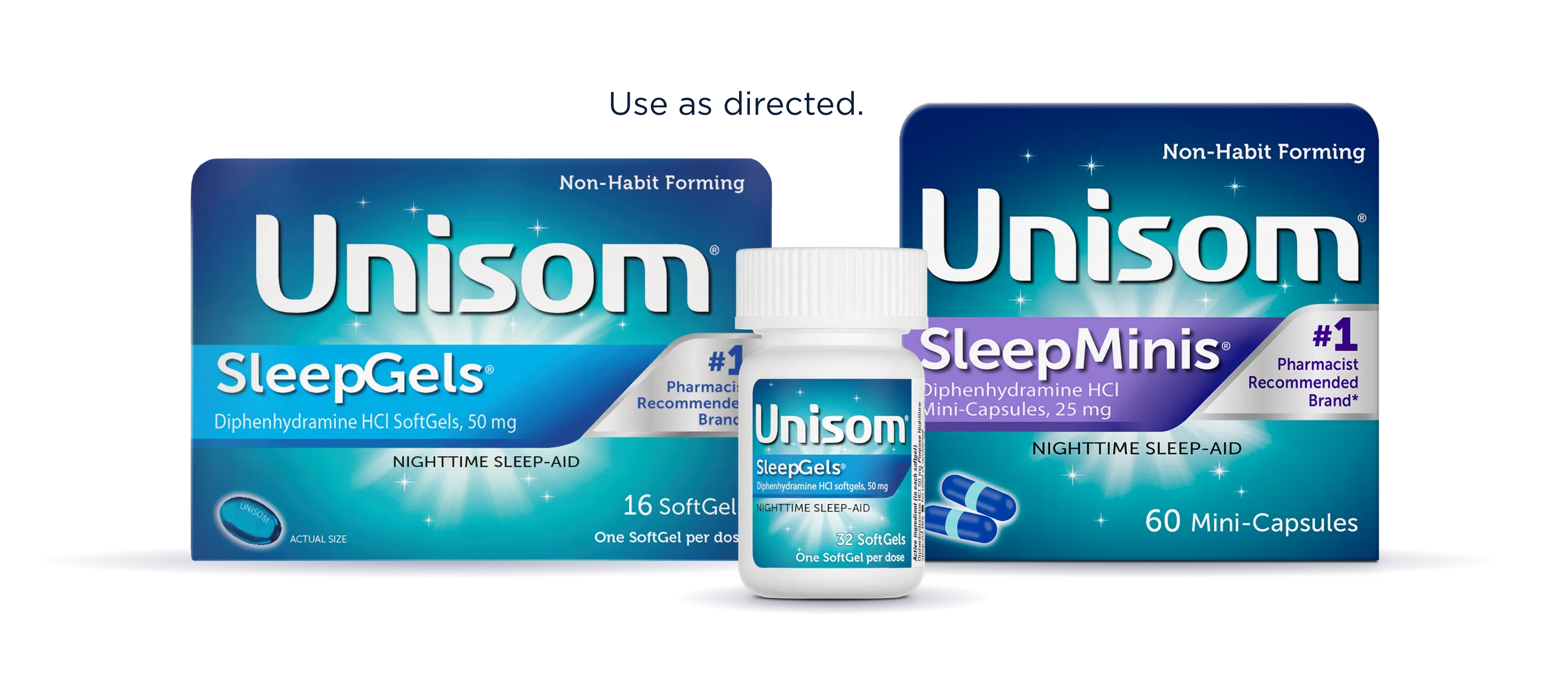It can happen to anybody from time to time. You’re sound asleep, then a car alarm goes off or your spouse gets up to use the bathroom and BAM! — you’re wide awake.
So what do you do now? Switch on the light and read a book? Grab your smartphone and check your email? According to the experts — definitely NOT.1 But don’t fret. There are plenty of proven tips and strategies to get you back to your regularly scheduled sleep.
Like clockwork
Our bodies operate on an internal clock, set to a 24-hour cycle: our circadian rhythm.¹ External signals like daylight, temperature, even exercise also help us stay on track. If your slumber is interrupted, you run the risk of not getting the good sleep your body craves.¹
When we’re in sync with our circadian rhythm, it’s easier to get the good, deep sleep our bodies need. We can help stay in rhythm by minimizing nighttime disruptions and sticking to a regular sleep schedule.¹

Getting the rest you need
How much sleep we need changes as we get older. Babies need around 16 hours a day, while teenagers need about nine. For adults this number goes down to seven or eight, but can vary quite a bit from person to person. Some adults need as much as 10 hours, while others need as little as five.2 Over time insufficient sleep can have a negative effect on your brain, heart, weight, and immune system.3 So if you have ongoing sleep issues, you may want to speak to a healthcare professional.
No matter what age you are, there’s no substitute for the benefits of a good night’s sleep. It helps you stay alert, improves your memory, helps maintain a healthy weight, helps build immunity, and keeps your heart healthy.3
Types of sleep disruptions
In very general terms, sleep disruptors can be divided into two categories: planned and unplanned. We plan on things like long-distance travel or a new work schedule. What we can’t plan for are disturbances during the night.
To stave off jet lag (or the grogginess that can come from switching to the night shift), try slowly adjusting your sleep schedule, progressively moving it closer to what will be your new norm.5
As far as unplanned disruptions, as the name implies, you can’t really plan for those. But there are some tips you can keep in your bedside drawer in case you need them.
Tips for getting back to slumberland
From noisy neighbors to garbage trucks to cats that like to sleep on your face, there are all sorts of things keeping you from getting enough sleep. About one in five Americans have difficulty getting back to sleep.6 And while this is a pretty weighty statistic, it also means there are lots of smart people figuring out what to do about it.
If you’re tired of the tossing and turning, the sleep experts at Johns Hopkins Medicine have some suggestions to help you get back to sleep:
- Don’t watch the clock. Your anxiety levels will go through the roof if you lie there watching the numbers change. Plus the light from your clock, phone, or tablet can make you feel more awake.6
- Get comfortable. A full bladder can make you uncomfortable, so hit the bathroom if you need to. Make sure your bedroom is the right temperature and that your pillow and blanket are just the way you like them.6
- Try muscle relaxation. Progress through the different muscle groups (arms, legs, torso, face), tensing the muscles for approximately five seconds before release. Take slow, deep breaths between each group.6
- Get up and go. If you haven’t fallen back asleep after about 20 minutes, get out of bed. Sit in a comfy chair in another room and read a book under soft light. Whatever you do, don’t stay in bed. Doing so could make your body associate your bed with wakefulness instead of sleep.6
- Follow your normal schedule the next day. Avoid the temptation to take a long nap or go to bed a lot earlier. The best way to get back on track is to stick with your
normal routine.6

Rest assured
If you ever need a little help sleeping through the night, all of our products can help you wake up less frequently. Unisom® is the #1 doctor-recommended OTC sleep-aid brand, with a range of options to help you fall asleep and wake up feeling refreshed.
Unisom® SleepGels® contain the histamine blocker diphenhydramine HCl. Blocking histamine production can help you fall asleep faster and stay asleep.
Unisom® SleepTabs® contain doxylamine succinate, which is a clinical-strength histamine blocker that works in a similar fashion to diphenhydramine. Unisom® SleepTabs® can help you fall asleep 33% faster and get a full night's sleep.
Find the Unisom® product that’s right for you.
Professional References
1. American Sleep Association, Editors. Circadian Rhythm and Sleep. American Sleep Association.
2. American Sleep Association, Editors. What is Sleep and Why is It Important? American Sleep Association.
3. American Sleep Association, Editors. How Important is Sleep? American Sleep Association.
4. Dr. Heather Wright, Reviewer. The Link Between Sleep and Job Performance. Sleep Foundation, a OneCare Media Company.
5. American Sleep Association, Editors. Jet Lag Treatment, Recovery and Symptoms. American Sleep Association.
6. Johns Hopkins Medicine, Editors. Up in the Middle of the Night? How to Get Back to Sleep. Johns Hopkins Medicine.
Related articles
†This statement has not been evaluated by the Food and Drug Administration. This product is not intended to diagnose, treat, cure or prevent any disease.





